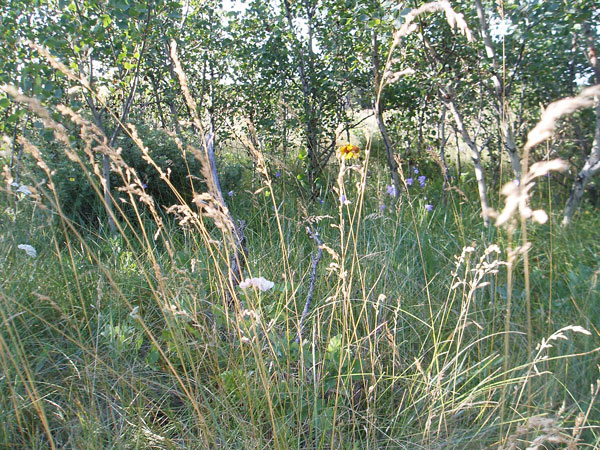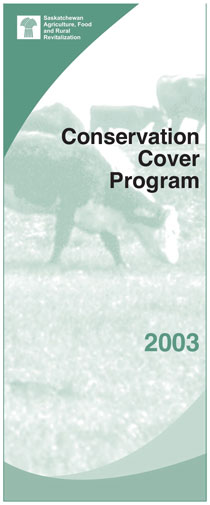Conservation Cover
Success Story
Converting marginal croplands to perennial forage cover is an effective way to protect soils from erosion and to make them more resilient to climate change. Perennial grasses and legumes hold topsoil in place and use available moisture more efficiently than annual crops. They also provide grazing and winter feed supplies to support the livestock sector. Benefits include reduced soil erosion, enhanced wildlife habitat, and lower operating costs.
A number of federal and provincial programs were offered to producers over the past twenty years to encourage the seeding of marginal croplands to perennial grasses and legumes. These programs were quite popular with farmers and millions of acres of previously cultivated lands were converted to “permanent” cover (Figure 1).

The first major initiative was the Federal Government’s Permanent Cover Program (1989 to 92). The PCP provided funding to assist farmers with seeding costs for a commitment to maintain the lands in forage cover. In Saskatchewan, 200,000 hectares were enrolled in the PCP programs. For details see a paper posted on the Agriculture and Agri-Food Canada website.
The provincially funded Conservation Cover Program (2001-03) also provided funding to assist with forage seeding costs. More than 400,000 hectares were seeded to forage cover under this program. For details see a Saskatchewan press release and associated program brochure (Figure 2).

Greencover Canada (2003-08) was a federal initiative to help producers improve their grassland-management practices, protect water quality, reduce greenhouse-gas emissions, and enhance wildlife habitat. The Greencover land conversion component encouraged the conversion of environmentally sensitive land to perennial forage cover. Program participants committed to maintain the perennial cover for at least ten years. For details see program information posted by Agriculture and Agri-Food Canada on its website.
Other forage cover conversion initiatives were introduced through this period by Ducks Unlimited Canada and Saskatchewan Watershed Authority. These initiatives focused on specific areas to enhance wildlife habitat, to protect riparian areas, and to increase forage supplies. Some Farmers also converted on their own independent of outside incentives. For more information visit the Ducks Unlimited and the Saskatchewan Watershed Authority websites.
Through these initiatives, Saskatchewan’s total area in “tame hay” has increased from about 1 million hectares in 1991 to almost 2.2 million hectares in 2009. This transition protects fragile soil areas and increases their resiliency to projected changes in climate.
Sources:
- Government of Saskatchewan (2003): Conservation Cover Program to Boost Forage Acres. http://www.gov.sk.ca/news?newsId=6eb80eaf-1136-4112-8a9e-9694850c0b5d [Accessed February 4, 2010]
- Saskatchewan Agriculture, Food and Rural Revitalization (2003): Conservation Cover Program. http://www.gov.sk.ca/news-archive/2003/4/17-220-attachment.pdf [Accessed February 4, 2010]
- Vaisey, J., Weins, T>W>, and Wettlaufer, R.J. (1996): The Permanent Cover Program – Is Twice Enough? Soil and Water Conservation Policies: Successes and Failures, Prague, Czech Republic – September 17-20, 1996 http://www4.agr.gc.ca/AAFC-AAC/display-afficher.do?id=1187267959357⟨=eng [Accessed February 4, 2010]
- Agriculture and Agri-Food Canada (n.d.): Greencover Canada. http://www4.agr.gc.ca/AAFC-AAC/display-afficher.do?id=1181580137261⟨=eng [Accessed February 4, 2010]